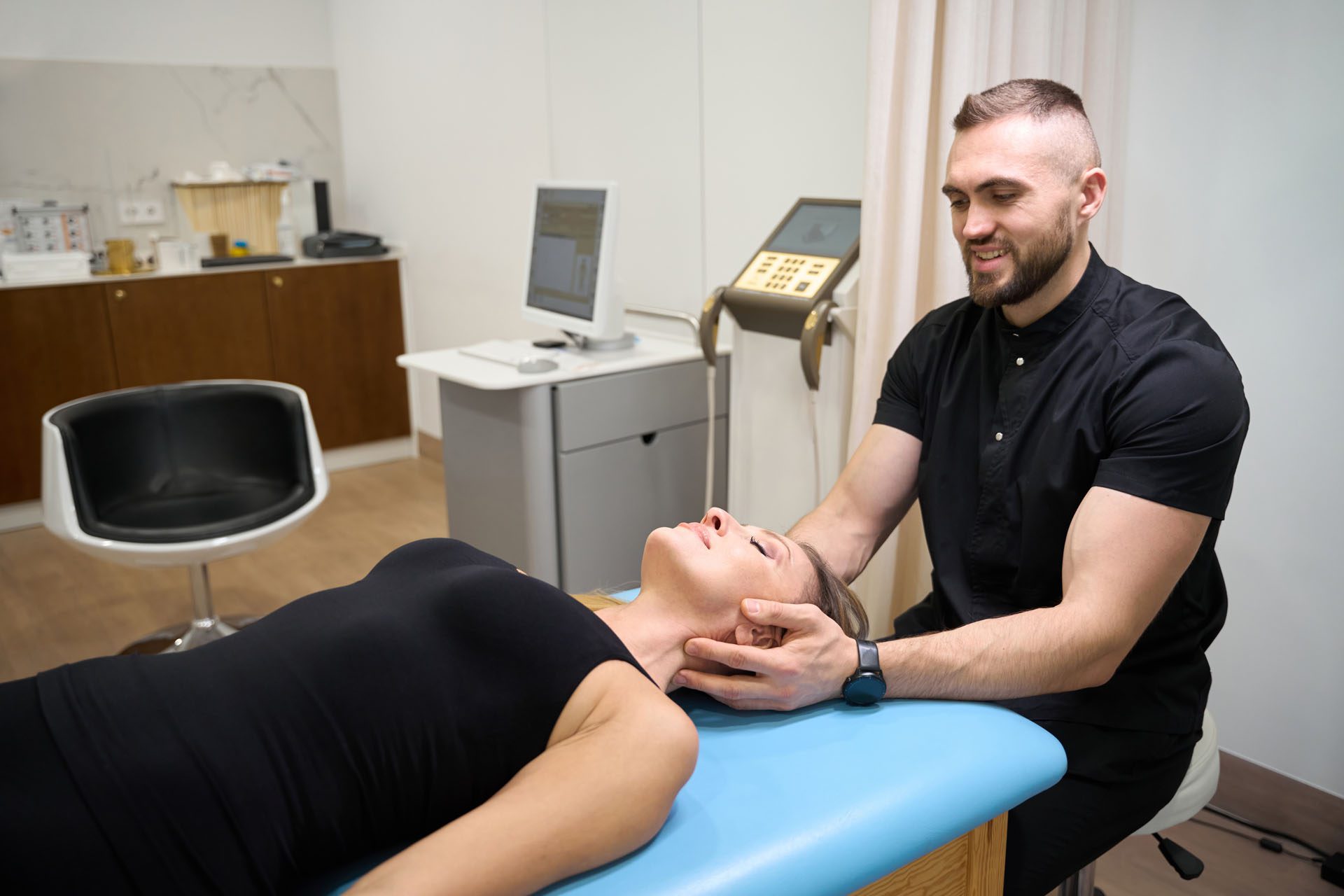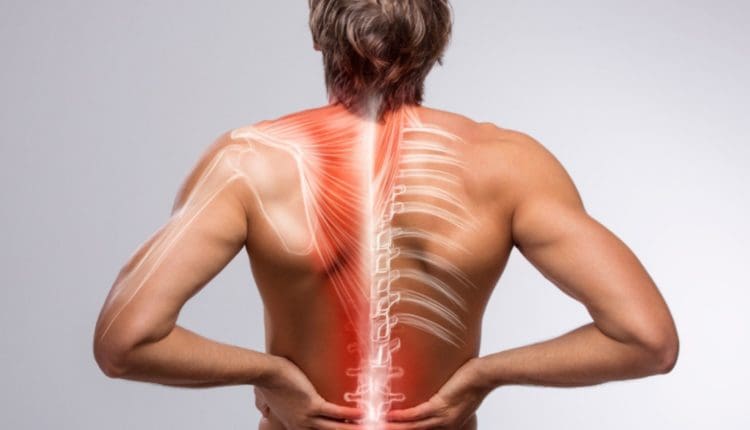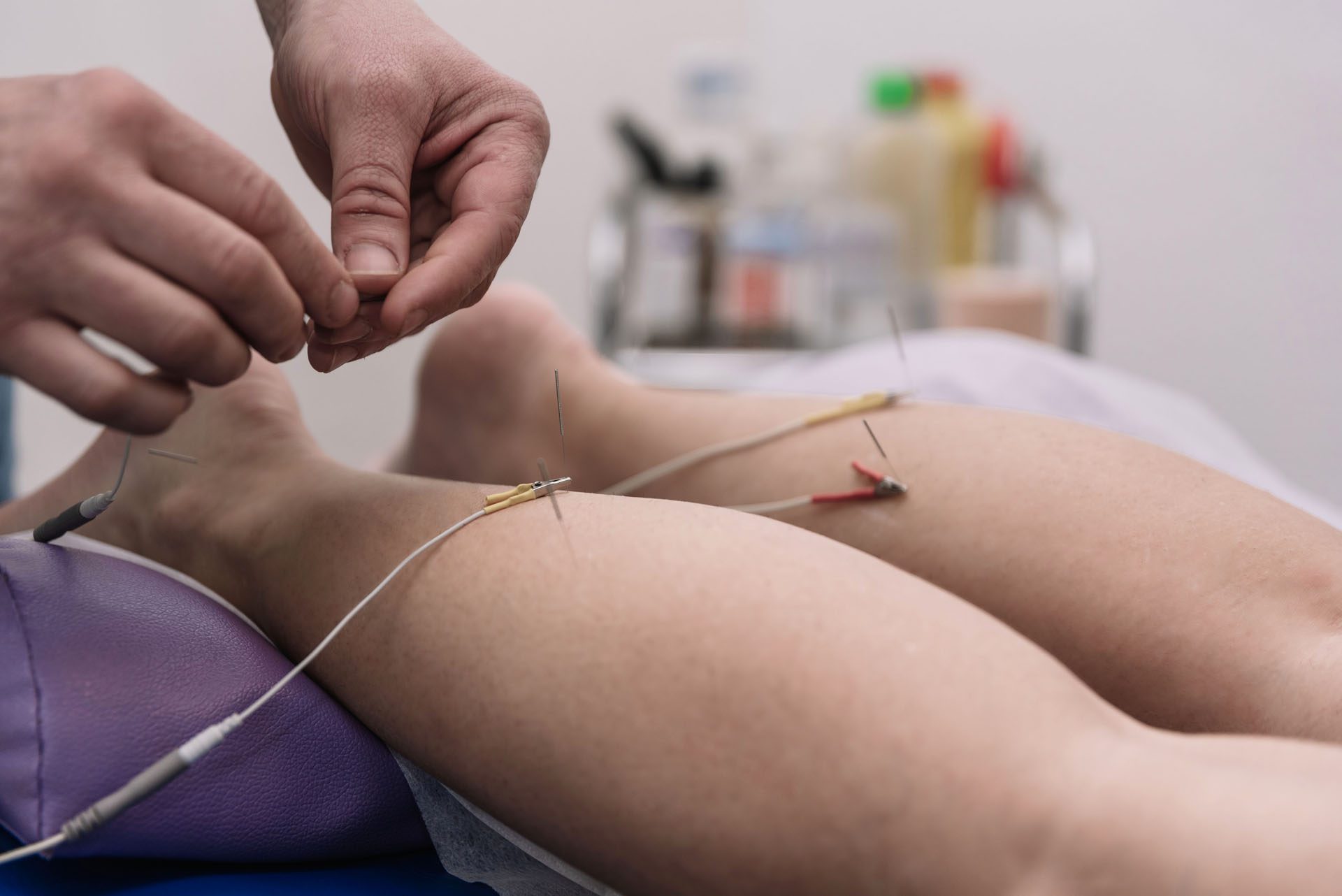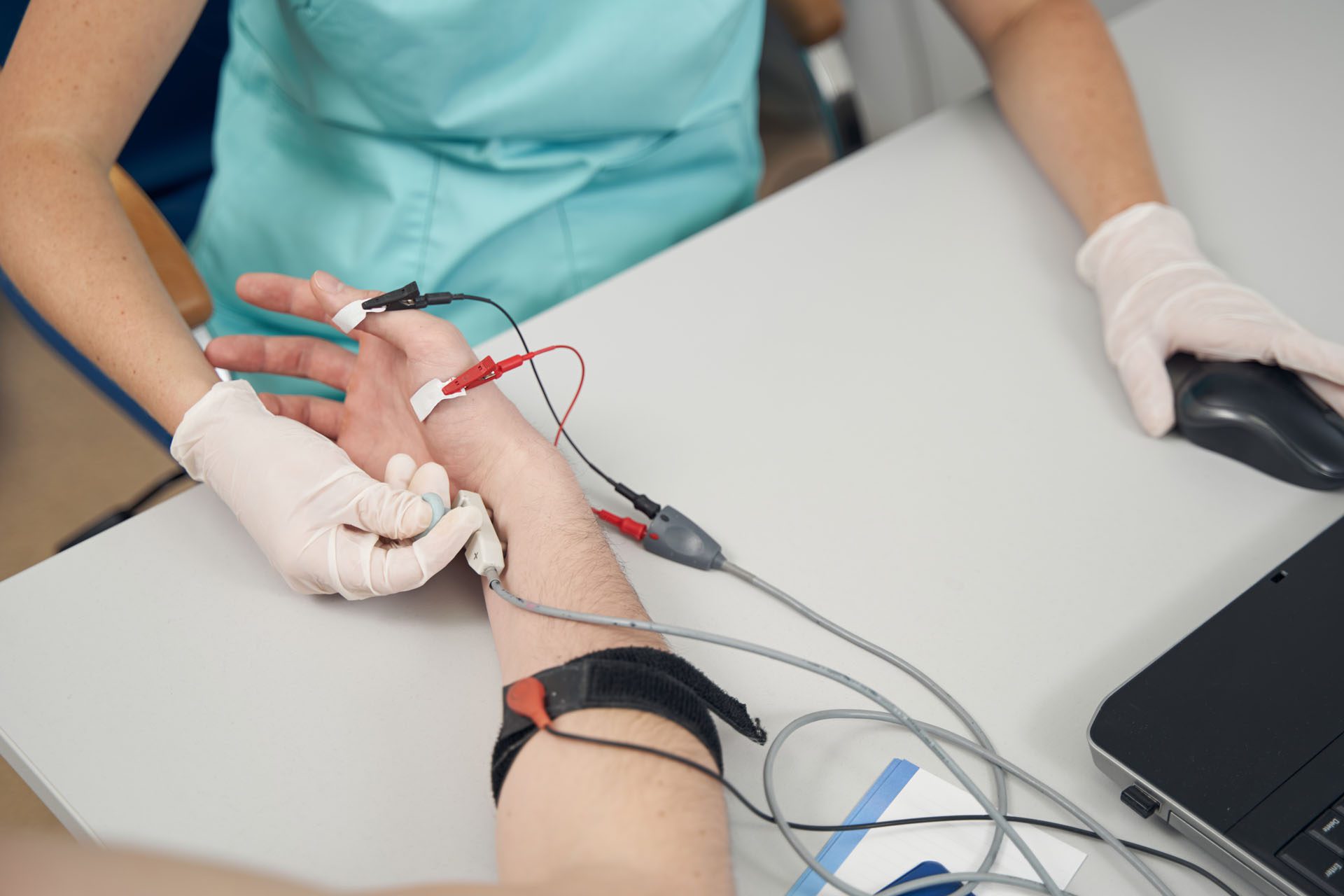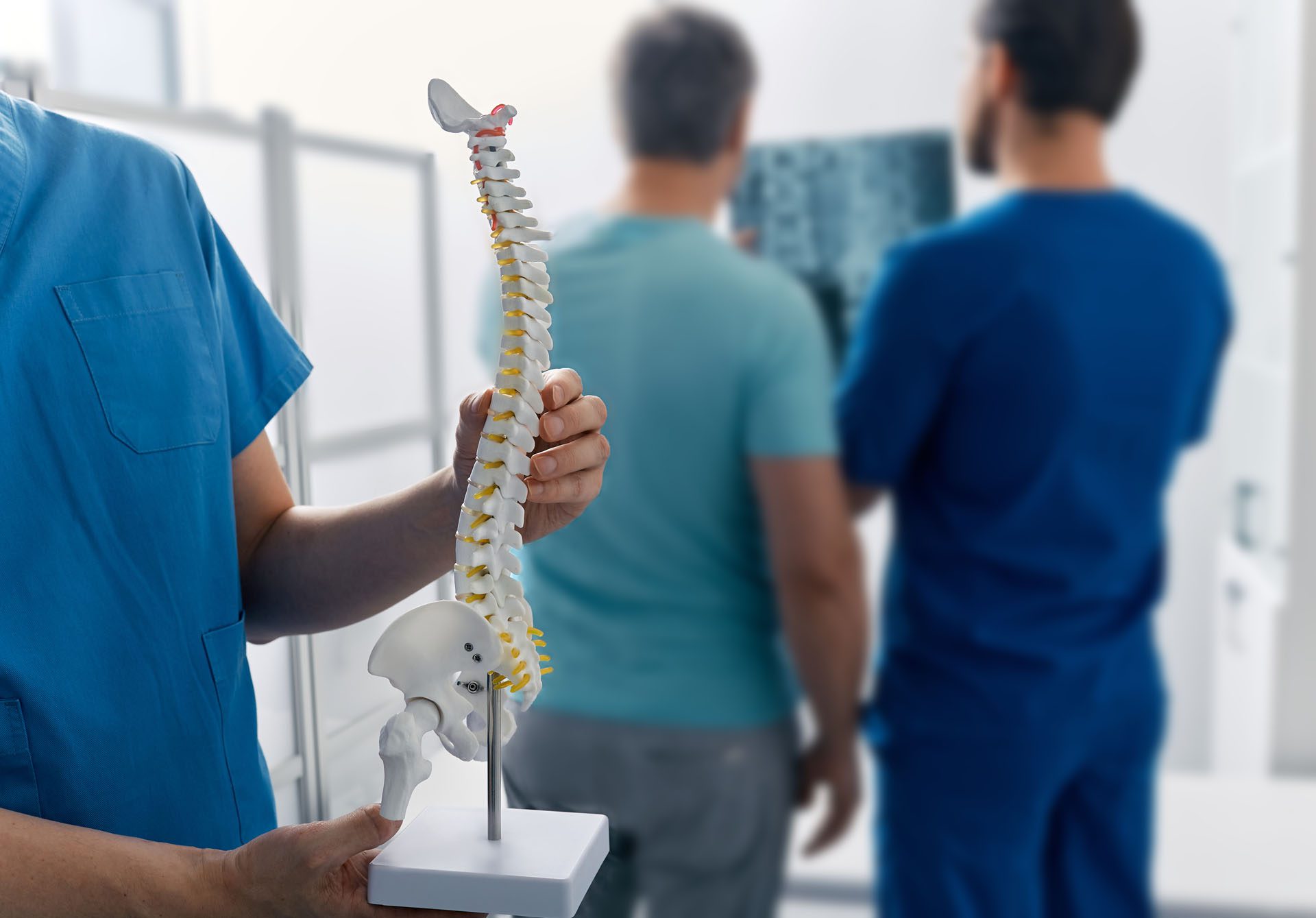Chiropractic Care Techniques Uncovered to Improve Muscle Imbalance
Improve your well-being with chiropractic care for muscle imbalance, targeting alignment issues for a pain-free life.
Restoring Muscle Balance Through Integrative Chiropractic Care
When opposing muscular groups, such the chest vs the upper back muscles or the quadriceps versus the hamstrings, show uneven strength, flexibility, or activation, this is known as a muscle imbalance. These abnormalities impact both the upper and lower limbs, interfere with normal movement patterns, lead to bad posture, and raise the risk of injury. They may result in persistent discomfort, decreased mobility, and consequences including nerve irritation or joint dysfunction if treatment is not received. Integrative chiropractic treatment provides a comprehensive, nonsurgical way to address imbalances, reduce pain, and enhance general wellbeing when paired with naturopathic methods, massage therapy, acupuncture, focused exercises, and nutritional advice. Using professional insights and evidence-based research, this thorough book explores the origins of muscle imbalances, the clinical use of integrative chiropractic therapy, and useful exercises for repair.
Understanding Muscle Imbalances
Muscle imbalances occur when one muscle group is stronger, weaker, or less flexible than its counterpart, resulting in misalignment and dysfunctional movement. For example, tight hip flexors paired with weak glutes can cause pelvic tilt, contributing to lower back pain. Similarly, overdeveloped chest muscles and weak upper back muscles may result in forward shoulder posture, a hallmark of upper crossed syndrome. These imbalances can cause discomfort, limit physical function, and increase the risk of injuries, particularly in individuals recovering from trauma or managing chronic conditions.
Integrative chiropractic care addresses these issues by combining spinal adjustments with holistic therapies to restore balance and function. “Muscle imbalances often stem from a combination of physical, nutritional, and lifestyle factors that disrupt the body’s harmony,” explains a chiropractic expert (Jimenez, n.d.). By integrating chiropractic adjustments, corrective exercises, and complementary therapies, this approach supports recovery, enhances mobility, and promotes long-term health.
Causes of Muscle Imbalances
Several factors contribute to muscle imbalances, impacting both upper and lower extremities and overall wellness. Identifying these causes is critical for effective treatment and prevention.
1. Improper Exercise Routines
Many exercise programs overemphasize certain muscle groups, such as the chest or quadriceps, while neglecting their opposing counterparts, like the upper back or hamstrings. For instance, performing frequent bench presses without complementing them with rows can lead to rounded shoulders and upper back strain (Jimenez, n.d.). Research shows that imbalanced routines can worsen upper crossed syndrome, characterized by forward head posture and shoulder pain (Nitayarak et al., 2021).
2. Sedentary Lifestyle and Poor Posture
Prolonged sitting, often accompanied by poor posture, tightens certain muscles while weakening others. Extended sitting shortens hip flexors and weakens glutes, causing pelvic tilt and lower back pain. Slouching at a desk tightens chest muscles and weakens the upper back, contributing to forward head posture and discomfort (Jimenez, n.d.).
3. Repetitive Movements
Repetitive tasks, such as typing, running, or lifting, can overwork specific muscles while underutilizing others. Active individuals may develop imbalances between the quadriceps and hamstrings, increasing the risk of strains and related injuries (Silvers-Granelli et al., 2021).
4. Injuries and Compensation
Injuries, such as those from motor vehicle accidents or sports, often lead to compensatory movement patterns that create imbalances. For example, favoring one leg after an ankle sprain can weaken the injured side and overwork the opposite, leading to chronic imbalances (Jimenez, n.d.).
5. Structural and Anatomical Factors
Structural issues, such as scoliosis or glenoid retroversion, can contribute to muscle imbalances. A study in a fetal lamb model suggested that abdominal wall muscle imbalances may contribute to scoliosis, thereby affecting spinal alignment (Kawaguchi et al., 2021). Similarly, rotator cuff imbalances are associated with shoulder issues that can cause pain and dysfunction (Mitterer et al., 2021).
6. Systemic Factors
Chronic conditions like chronic obstructive pulmonary disease (COPD) can cause muscle dysfunction due to deconditioning, inflammation, or oxidative stress, weakening muscles and affecting physical function (Gea et al., 2013).
7. Myofascial Trigger Points
Myofascial trigger points (MTrPs), or muscle “knots,” can alter muscle activation patterns, contributing to imbalances. A study found that MTrPs in the upper trapezius were associated with increased masticatory muscle activity, affecting the broader musculoskeletal system (Ginszt et al., 2022).
Clinical Rationale for Integrative Chiropractic Care
Integrative chiropractic care combines spinal adjustments with holistic therapies, such as naturopathy, acupuncture, and nutritional counseling, to address muscle imbalances and focus on root causes of whole-body wellness. Experts emphasize that this approach restores balance, supports natural healing, and enhances overall health (Jimenez, n.d.). Here’s why it’s effective:
1. Comprehensive Assessment
Integrative care utilizes detailed assessments, including patient history, physical examinations, and lifestyle evaluations, to identify underlying factors such as nutritional deficiencies, stress, or inflammation that contribute to muscle imbalances. This allows for personalized treatment plans that address both physical and systemic causes (Jimenez, n.d.).
2. Restoring Spinal and Joint Mobility
Muscle imbalances can lead to spinal misalignments, or subluxations, which restrict joint motion and exacerbate pain. Chiropractic adjustments realign the spine and joints, reducing stress on muscles and promoting balanced function. For example, adjustments can correct pelvic tilt caused by tight hip flexors, alleviating lower back pain (Wilczyński et al., 2020).
3. Enhancing Nervous System Function
The nervous system regulates muscle activation and coordination. Subluxations can disrupt nerve signals, leading to muscle weakness or overactivity. Chiropractic adjustments improve nervous system function, ensuring proper muscle signaling and coordination (Jimenez, n.d.).
4. Reducing Muscle Tension and Pain
Chiropractic techniques, such as soft tissue manipulation and myofascial release, target tight muscles and trigger points, improving flexibility and reducing pain. These methods are effective for conditions like upper crossed syndrome, where tight pectoral muscles contribute to shoulder discomfort (Nitayarak et al., 2021).
5. Supporting Healing Through Nutrition
Nutritional counseling, a key component of integrative care, addresses deficiencies like low protein or magnesium that impair muscle function. A diet rich in anti-inflammatory foods, such as omega-3s and antioxidants, supports tissue repair and reduces inflammation, aiding recovery from imbalances (Jimenez, n.d.).
6. Integrating Complementary Therapies
Integrative care incorporates massage therapy, acupuncture, and naturopathic approaches to address imbalances holistically. Massage relaxes tight muscles, acupuncture reduces pain and inflammation, and naturopathy supports systemic health, complementing chiropractic adjustments (Jimenez, n.d.).
7. Empowering Patients Through Education
Clear communication empowers patients to understand their imbalances and take an active role in recovery. Providing personalized exercise and nutrition plans fosters adherence. “Educating patients about their condition promotes lasting wellness,” notes a chiropractic expert (Jimenez, n.d.).
Can Core Exercises Help with Back Pain?-Video
Exercises to Correct Muscle Imbalances
Targeted exercises strengthen weak muscles, stretch tight ones, and improve coordination, supporting recovery and wellness. Below are evidence-based exercises for the upper and lower extremities, suitable for home or clinical use, inspired by integrative approaches (Jimenez, n.d.; Nitayarak et al., 2021; Wilczyński et al., 2020).
Upper Body Exercises
These exercises address imbalances such as forward head posture and rounded shoulders, which can lead to neck and shoulder pain.
- Scapular Retraction (Strengthens Upper Back, Stretches Chest)
- Equipment: Resistance band or none
- Instructions:
- Stand with feet shoulder-width apart, holding a resistance band with both hands.
- Pull the band apart by squeezing shoulder blades together, keeping arms straight.
- Hold for 2 seconds, then slowly return to the starting position.
- Perform 3 sets of 10–12 repetitions.
- Benefits: Strengthens rhomboids and trapezius, counteracting tight pectoral muscles (Nitayarak et al., 2021).
- Pectoral Stretch (Stretches the Chest)
- Equipment: Doorway or wall
- Instructions:
- Stand in a doorway with arms bent at 90 degrees, forearms on the doorframe.
- Lean forward gently to feel a stretch in the chest.
- Hold for 20–30 seconds, repeat 2–3 times.
- Benefits: Improves pectoralis minor flexibility, reducing shoulder tension (Nitayarak et al., 2021).
- Chin Tuck (Strengthens Neck Flexors, Stretches Neck Extensors)
- Equipment: None
- Instructions:
- Sit or stand with a straight spine.
- Gently tuck chin toward chest, creating a “double chin” without tilting the head.
- Hold for 5 seconds, repeat 10–12 times.
- Benefits: Corrects forward head posture and strengthens deep neck flexors (Jimenez, n.d.).
Lower Body Exercises
These exercises target imbalances in the lower extremities, such as weak glute muscles or tight hip flexors, which can contribute to lower back pain.
- Glute Bridge (Strengthens Glutes, Stretches Hip Flexors)
- Equipment: None
- Instructions:
- Lie on your back with knees bent, feet flat on the floor, hip-width apart.
- Lift hips toward the ceiling, squeezing glutes at the top.
- Hold for 2 seconds, then lower slowly.
- Perform 3 sets of 12–15 repetitions.
- Benefits: Strengthens glutes, stabilizes pelvis, and reduces hip flexor tightness (Wilczyński et al., 2020).
- Hip Flexor Stretch (Stretches Hip Flexors)
- Equipment: None
- Instructions:
- Kneel on one knee with the other foot in front, forming a 90-degree angle.
- Gently push your hips forward to feel a stretch in the front of your kneeling hip.
- Hold for 20–30 seconds, switch sides, repeat 2–3 times.
- Benefits: Increases hip flexor flexibility, reducing pelvic tilt (Jimenez, n.d.).
- Hamstring Curl with Resistance Band (Strengthens Hamstrings)
- Equipment: Resistance band
- Instructions:
- Lie face down with a resistance band looped around one ankle and anchored to a stable object.
- Bend your knee to pull the band toward your glutes, then slowly return to the starting position.
- Perform 3 sets of 10–12 repetitions per leg.
- Benefits: Balances quadriceps dominance, reducing injury risk (Silvers-Granelli et al., 2021).
Core Exercises
Core strength stabilizes the spine and pelvis, preventing imbalances that contribute to pain and dysfunction.
- Plank (Strengthens Core)
- Equipment: None
- Instructions:
- Lie face down, then prop yourself up on your forearms and toes, keeping your body in a straight line.
- Hold for 20–60 seconds, depending on ability, repeat 3 times.
- Benefits: Strengthens transverse abdominis and core muscles, supporting spinal alignment (Wilczyński et al., 2020).
- Dead Bug (Strengthens Core, Improves Coordination)
- Equipment: None
- Instructions:
- Lie on your back with your arms extended toward the ceiling and your knees bent at a 90-degree angle.
- Slowly extend one arm overhead and the opposite leg toward the floor, keeping lower back pressed into the ground.
- Return to the starting position and repeat on the other side.
- Perform 3 sets of 10–12 repetitions per side.
- Benefits: Enhances core stability and coordination, reducing lower back strain (Jimenez, n.d.).
Integrative Therapies for Muscle Imbalances
Complementary therapies enhance chiropractic care, promoting holistic recovery and wellness.
1. Massage Therapy
Massage targets tight muscles and trigger points, improving flexibility and reducing pain. Deep tissue massage can help release tension in the upper trapezius, addressing imbalances that contribute to neck and shoulder pain (Ginszt et al., 2022).
2. Acupuncture
Acupuncture reduces pain and inflammation by stimulating specific points, complementing chiropractic adjustments by promoting muscle relaxation and recovery (Jimenez, n.d.).
3. Nutritional Counseling
Nutrition supports muscle health and recovery. Integrative care includes counseling to address deficiencies, such as low protein or magnesium, that impair muscle function. A diet rich in anti-inflammatory foods, like omega-3s and antioxidants, aids tissue repair (Jimenez, n.d.).
4. Naturopathic Approaches
Naturopathic care focuses on natural remedies, such as herbal supplements or lifestyle changes, to support systemic health and muscle balance, complementing chiropractic interventions (Jimenez, n.d.).
Preventing Long-Term Complications
Untreated muscle imbalances can lead to chronic pain, joint degeneration, and reduced quality of life. For example, rotator cuff imbalances may contribute to shoulder issues that impair mobility (Mitterer et al., 2021). Similarly, lumbar-pelvic imbalances can exacerbate lower back pain (Wilczyński et al., 2020). Early intervention with integrative chiropractic care helps prevent these complications, thereby maintaining optimal health and function.
The Importance of Patient-Centered Care
Integrative care emphasizes patient-centered approaches, with clear communication ensuring successful outcomes. Educating patients about their imbalances, providing personalized exercise and nutrition plans, and explaining the benefits of treatment foster adherence. “When patients understand their condition, they’re more committed to their wellness journey,” notes a chiropractic expert (Jimenez, n.d.).
Conclusion
Upper and lower extremity pain and dysfunction may result from muscle imbalances caused by incorrect training, poor posture, repetitive motions, accidents, structural issues, systemic causes, or trigger points. Integrative chiropractic therapy, in conjunction with targeted exercises, massage, acupuncture, nutritional counseling, and naturopathic methods, provides a comprehensive, nonsurgical approach to reestablishing equilibrium, reducing pain, and enhancing overall well-being. Exercises such as planks, glute bridges, and scapular retractions are effective techniques that can be performed in a therapeutic environment or at home. This holistic approach promotes long-lasting health and vitality by empowering individuals and addressing underlying issues.
For more information or to seek care, contact a chiropractic specialist at 915-412-6680.
References
- Ginszt, M., Zieliński, G., Szkutnik, J., Wójcicki, M., Wyszyńska, J., & Majcher, P. (2022). Cervical myofascial pain is associated with an imbalance of masticatory muscle activity. International Journal of Environmental Research and Public Health, 19(3), 1577. https://doi.org/10.3390/ijerph19031577
- Gea, J., Pascual, S., Casadevall, C., Orozco-Levi, M., & Barreiro, E. (2013). Pathophysiology of muscle dysfunction in COPD. Journal of Applied Physiology, 114(9), 1222–1234. https://doi.org/10.1152/japplphysiol.00981.2012
- Grace, T. G., Sweetser, E. R., Nelson, M. A., Ydens, L. R., & Skipper, B. J. (1984). Isokinetic muscle imbalance and knee-joint injuries: A prospective blind study. The Journal of Bone and Joint Surgery. American Volume, 66(5), 734–740. https://pubmed.ncbi.nlm.nih.gov/6725320/
- Jimenez, A. (n.d.). How to fix muscle imbalance. Dr. Alex Jimenez DC. https://dralexjimenez.com/how-to-fix-muscle-imbalance/
- Kawaguchi, K., Obayashi, J., Ohyama, K., Zuccollo, J., & Pringle, K. C. (2021). Muscle imbalance as a cause of scoliosis: A study in a fetal lamb abdominal wall defect model. Pediatric Surgery International, 37(12), 1755–1760. https://doi.org/10.1007/s00383-021-05000-2
- Mitterer, M., Matis, N., Gassenbauer, C., Redl, I., & Svehlik, M. (2021). Muscle volume imbalance may be associated with static posterior humeral head subluxation. BMC Musculoskeletal Disorders, 22(1), 279. https://doi.org/10.1186/s12891-021-04146-3
- Nitayarak, H., Charntaraviroj, P., & Bumrerraj, S. (2021). Effects of scapular stabilization exercises on posture and muscle imbalances in women with upper crossed syndrome: A randomized controlled trial. Journal of Back and Musculoskeletal Rehabilitation, 34(6), 1031–1040. https://doi.org/10.3233/BMR-200088
- Ruedemann, A. D., Jr. (1956). Scoliosis and vertical ocular muscle imbalance. AMA Archives of Ophthalmology, 56(3), 389–414. https://doi.org/10.1001/archopht.1956.00930040397007
- Silvers-Granelli, H. J., Cohen, M., Espregueira-Mendes, J., & Mandelbaum, B. (2021). Hamstring muscle injury in the athlete: State of the art. Journal of ISAKOS, 6(3), 170–181. https://doi.org/10.1136/jisakos-2017-000145
- Wilczyński, J., Nowakowska, K., & Zorena, K. (2020). Dynamics of changes in isometric strength and muscle imbalance in the treatment of women with low back pain. BioMed Research International, 2020, 6139535. https://doi.org/10.1155/2020/6139535





